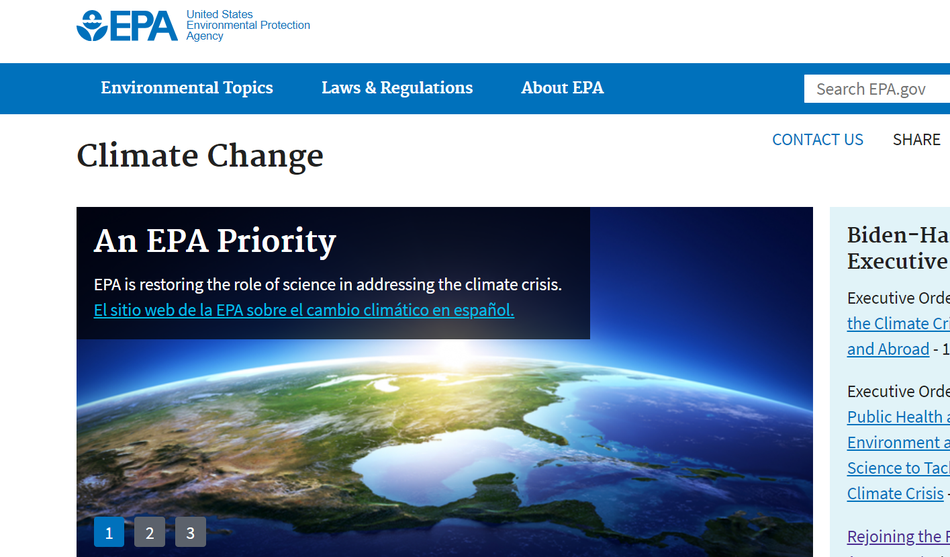The Trump administration deleted the U.S. Environmental Protection Agency’s main climate change webpage on Oct. 16, 2018. Now, it’s back.
The EPA announced Thursday that it rebooted its climate webpage, which includes information about how the climate is warming and how the regulatory agency seeks to curb heat-trapping greenhouse gas emissions. “Climate facts are back on EPA’s website where they should be,” the new EPA Administrator Michael Regan said in a statement.
The government watchdog group Environmental Data and Governance Initiative (EDGI), which monitors federal websites, spotted the eliminated climate pages in fall 2018. Previously, in 2017, the Trump administration’s EPA had only removed climate content from the pages, posting “This page is being updated.” But eventually the administration just terminated the pages. “There’s no indication now that there was even a climate change website,” EDGI’s Eric Nost, who reported the deletion, told Mashable at the time.
According to former EPA officials, the move to eliminate climate information was relatively straightforward. The EPA protects human health and the environment, in large part by limiting pollutants and emissions from the likes of power plants and automobiles. Yet the Trump administration sought to promote fossil fuel extraction and burning. This meant the EPA would need to curb or ease rules that limit the amount of heat-trapping carbon emissions that enter the atmosphere and add to Earth’s skyrocketing greenhouse gas levels (they did).
But displaying climate science information, which shows how carbon emissions are heating the globe, is at odds with allowing largely unchecked emissions of potent planet-warming gases like CO2 and methane.
“They’re protecting themselves from scrutiny — an uninformed public is key to shielding them from scrutiny,” Joe Goffman, a former EPA senior counsel in the Office of Air and Radiation during the Obama administration, told Mashable in November 2018. Goffman has since rejoined the Biden administration’s EPA.
“It’s sad, but straightforward,” Stan Meiburg, a former acting deputy administrator of the EPA during the Obama administration, also told Mashable in November 2018. “It’s a consistent reflection of the position the [Trump] administration has taken about the lack of need to address greenhouse gas emissions,” added Meiburg.
Earth is now reacting to the highest atmospheric levels of heat-trapping carbon dioxide in at least 800,000 years, but more likely millions of years. The consequences are clear:

A screenshot of the rebooted EPA climate change homepage.
Image: epa website / screenshot
The EPA has a clear authority from the U.S. Supreme Court to limit and regulate greenhouse gases, like it does the harmful air pollution from automobiles. As Mashable previously reported:
Settled by a five to four vote in 2007, Massachusetts v. EPA ruled for the first time that heat-trapping greenhouse gases are pollutants, and that the Environmental Protection Agency (EPA) can regulate them, just as the agency reins in pollution emitted by cars and trucks.
“I think Massachusetts v. EPA is the most important environmental decision the Supreme Court has ever decided,” Ann Carlson, the director of the Emmett Institute on Climate Change and the Environment at the UCLA School of Law, said in an interview.
The new EPA administrator, Michael Regan, told the New York Times that the agency is now developing new emissions rules for power plants and vehicles.
As the second-biggest emitter of greenhouse gases on Earth, the U.S. has a critical role to play in curbing the planet’s warming this century. Earth’s warming has accelerated in recent decades, and currently shows no signs of slowing: 20 of the 21 hottest years have occurred since 2001.
WATCH: Even the ‘optimistic’ climate change forecast is catastrophic

